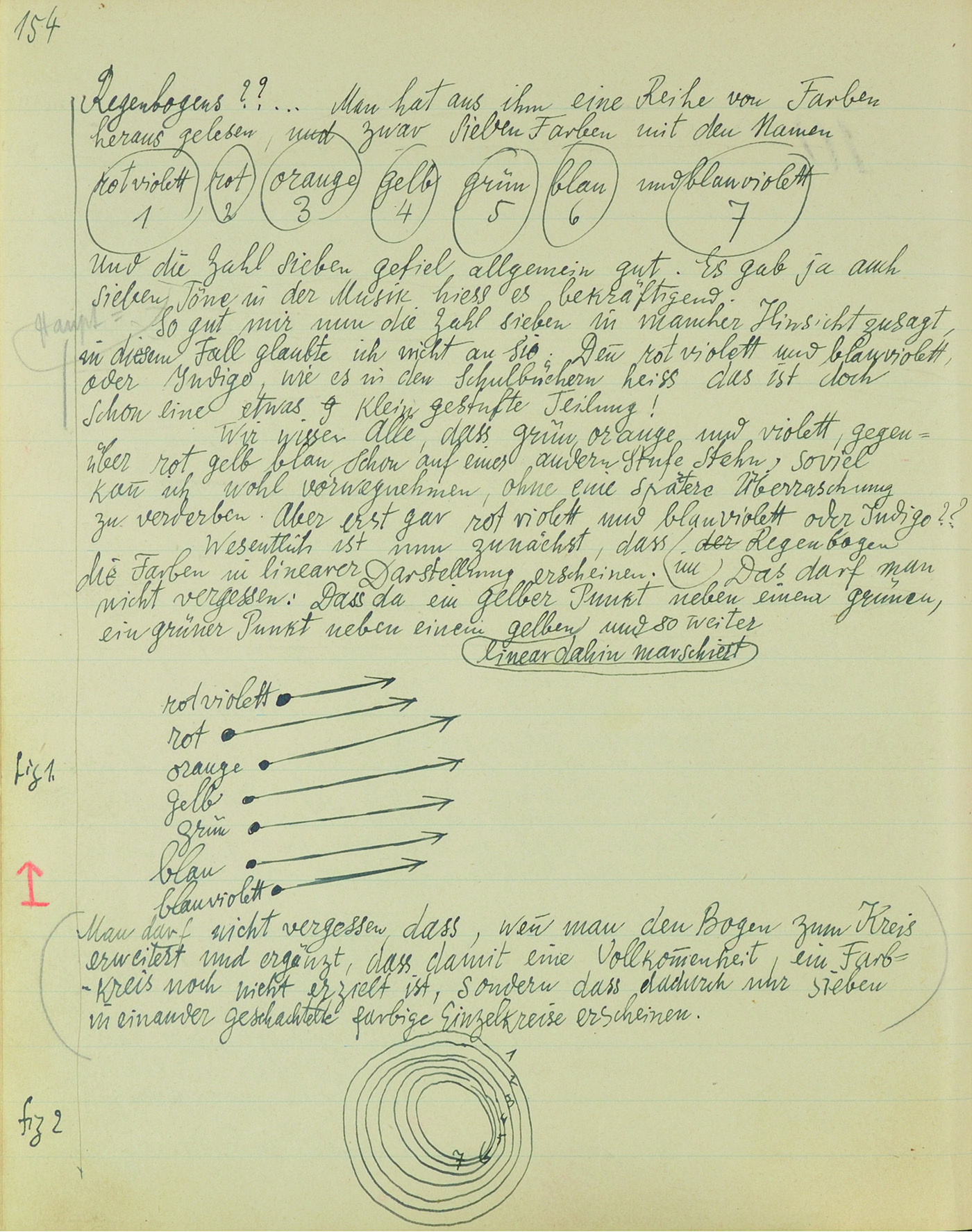Rainbow ? . . .
Someone picked out a series of
colours, seven of them with the names :
red-violet, red, orange, yellow, green, blue, blue-violet,
and people were very pleased with the number 7.
After all, they said by way of confirmation,
there are also seven tones in our musical scale.
But much as the number 7 appeals to me in certain respects, I have no faith in it here.
For
red-violet and blue-violet, or Indigo, as it is called in the schoolbooks, is a rather subtle
division!
We all of us know that green, orange, and violet differ in kind from red, yellow, and blue;
I can anticipate this much without spoiling the surprise that is in store for us.
But what
about red-violet or blue-violet or indigo?
The first important point is that the arrangement of the colours in the rainbow is linear.
We must not forget that in the rainbow a yellow point marches along In a line, side by
side with a green one, and a green point side by side with a yellow one, etc.
We must not forget that when we extend the arc into a circle we still do not have a complete
colour circle;
what we have are seven coloured circles, one within the other.
Paul Klee Notebooks,
Edited by Jurg Spiller, translated by Ralph Manheim, Percy Lund, Humphries & Co., Ltd, London, 1961

